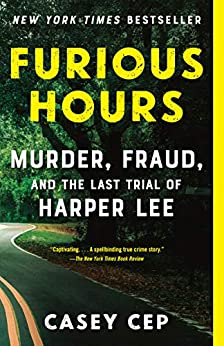More on this book
Community
Kindle Notes & Highlights
She would spend a year in town investigating the case, and many more turning it into prose. The mystery in the courtroom that day was what would become of the man who shot the Reverend Willie Maxwell. But for decades after the verdict, the mystery was what became of Harper Lee’s book.
No longer legally able to subjugate other people, wealthy white southerners turned their attention to nature instead. The untamed world seemed to them at worst like a mortal danger, seething with disease and constantly threatening disaster, and at best like a terrible waste.
Violence has a way of destroying everything but itself. A murdered person’s name always threatens to become synonymous with her murder; a murdered person’s death always threatens to eclipse her life.
Loved ones would remember Mary Lou’s talent for sewing, her devotion to her husband, her patience, her faith, and her fortitude, but apart from her birth, marriage, and death certificates, the only official record of her existence is a disturbingly thorough description of the condition of her body at the time of her death.
Mouths don’t empty themselves unless the ears are sympathetic and knowing.”
As Hurston quickly learned, outsiders had viewed voodoo with fear and suspicion for so long that insiders now returned the favor.
The healing aspects of voodoo were essential for a population routinely unable to access health care because of their race, socioeconomic standing, or distance from doctors and hospitals; the incorporation of elements of other religions was, as with many syncretic faiths, a product of forced migration, social coercion, and cultural appropriation.
Supernatural explanations flourish where law and order fails, which is why, as time passed and more people died, the stories about the Reverend grew stronger, stranger, and, if possible, more sinister.


